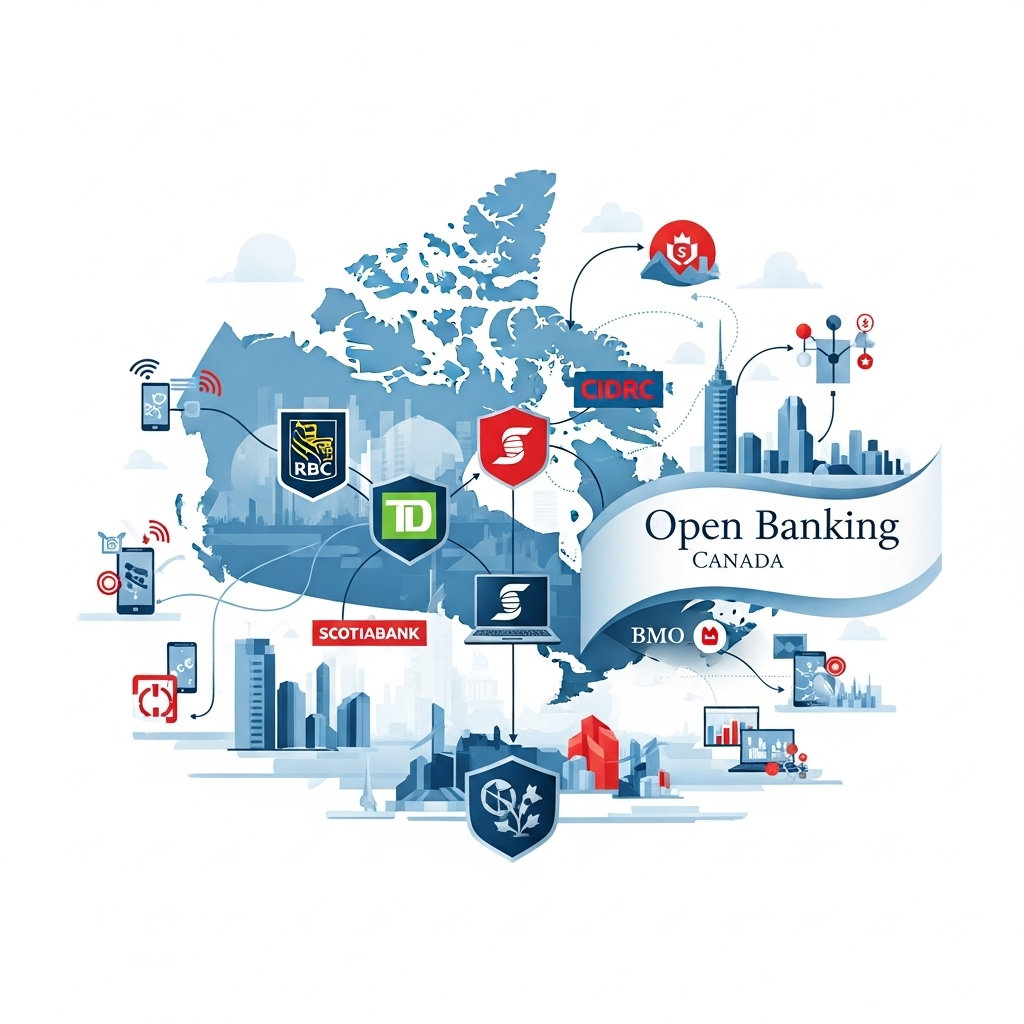A quiet revolution is coming to Canadian banking. It promises more control, better services, and a much-needed security upgrade for your financial life.
Right now, an estimated nine million Canadians are participating in a risky, unregulated habit: sharing their bank account username and password with third-party apps for budgeting, investing, and more. This common practice, known as “screen scraping,” is a security nightmare that could leave you liable for any financial losses if something goes wrong.
To fix this, the Canadian government is officially launching a new system in **early 2026** called **Consumer-Driven Banking (CDB)**—Canada’s version of Open Banking. It’s designed to replace the insecure practice of password sharing with a secure, regulated framework that puts you firmly in control of your financial data.
So, what does this all mean for you? Let’s break it down in plain language.
Section 1: What is Open Banking, Really?
At its core, Open Banking is a system that lets you securely share your financial data with accredited, government-approved apps and services. Think of it like a **digital passport for your money**. You, and only you, decide which apps get a “visa” to see specific pieces of your financial information, for a specific purpose, and only for a limited time. You never have to share your actual bank password again.
From Risky Scraping to Secure APIs
The magic behind this secure sharing is a technology called an **Application Programming Interface (API)**. An API acts as a secure messenger between your bank and an app, using temporary digital “tokens” instead of your password. This is a massive upgrade from the old, insecure method of screen scraping.
| Attribute | Old Way (Screen Scraping) | New Way (Open Banking) |
|---|---|---|
| Credentials | You share your bank username and password directly with the app. | Your credentials are never shared. The app uses a secure, temporary token. |
| Data Access | The app often sees everything you can see in your online banking. | You grant access only to specific data (e.g., “transaction history only”). |
| Your Liability | You may be held responsible for losses if your account is hacked. | Liability rests with the party at fault (the bank or the app), not you. |
Section 2: What’s In It For Me? The Real-World Benefits
This isn’t just a technical upgrade; it’s designed to unlock real value for your financial life. Here are a few practical benefits you can expect:
- A Complete Financial Picture: Imagine seeing all your accounts—chequing from TD, a credit card from RBC, and an investment from BMO—all in one secure budgeting app. Open Banking makes this possible, giving you a single dashboard to manage your entire financial life.
- Faster, Easier Loan Applications: When applying for a mortgage or a loan, you’ll be able to grant the lender secure, temporary access to verify your income and financial history directly. This can eliminate the need to manually gather and submit piles of documents, speeding up the approval process.
- Smarter Financial Tools: With your consent, apps can analyze your spending to offer personalized advice, help you find and cancel unused subscriptions, or even use your regular rent payments to help build your credit score—a huge advantage for newcomers or young people.
- More Competition and Choice: By lowering barriers for new financial technology (FinTech) companies to enter the market, Open Banking is expected to spur competition, leading to better products and potentially lower fees for consumers.
For small businesses, the benefits are just as significant, including automated accounting, better cash flow management, and faster access to capital.
Section 3: Is It Safe? Security, Privacy, and Trust
This is the most important question, and the entire Canadian system has been designed with safety as its top priority. According to research from the Financial Consumer Agency of Canada (FCAC), consumers’ biggest concerns are protection from losses and data security. The framework addresses this in two key ways:
- A “Circle of Trust”: Only companies that have gone through a rigorous accreditation process managed by the FCAC will be allowed to participate. Applicants must prove they meet high standards for security, privacy, and financial stability. This ensures you’re only connecting with vetted, trustworthy providers.
- Clear Liability Rules: This is the single biggest protection for consumers. Under the new Consumer-Driven Banking Act, liability rests with the party at fault. If you suffer a financial loss because of a data breach or an error, the entity responsible—whether it’s the bank or the third-party app—will be held liable. This resolves the dangerous liability vacuum that exists today with screen scraping.
Furthermore, your consent must be re-obtained at least every 12 months, and you will have access to a simple dashboard to see and revoke any app’s access to your data at any time.
Section 4: When Is This Happening? The Official Timeline
Canada’s journey toward Open Banking has been a long and deliberate one, prioritizing stability over speed. After years of consultation, the government passed the foundational legislation in June 2024. This established the rules of the road and formally appointed the FCAC as the system’s supervisor.
According to the government’s most recent policy statement, the fully operational Consumer-Driven Banking framework is officially targeted to launch in **early 2026**.
Conclusion: A More Secure and Empowered Future
Open Banking is more than just a new piece of technology; it’s a fundamental shift that puts you back in the driver’s seat of your own financial data. It replaces a risky, insecure practice with a regulated, consent-driven system designed for the digital age.
While the 2026 launch is still some time away, it marks the beginning of a more competitive, innovative, and secure financial future for all Canadians. It’s a future where your data works for you, on your terms.

